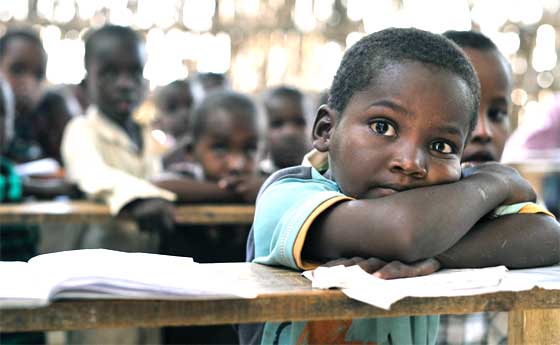Moreover, advanced prosumption techniques and technologies make production work clean and light. Hence, it can be carried out by men and women, young and old. In particular, widely distributed advanced prosumption can be facilitated by moveable factories.
These can be individual mobile factories, which are mounted on the back of a truck, and used, for example, during the processing and packaging of agricultural harvests. Also, there can be sets of mobile factories comprising several shipping container size units with complementary production capabilities, such as roof truss fabrication and door set assembly. In addition, there can be moveable factories that comprise several pre-fabricated elements that are delivered by truck and are assembled to make one larger factory, for example, with clean environments for production of goods containing microelectronics.
Establish reciprocal prosperity zones
Many regions of emigration may be perceived as being wholly dangerous, while there are actually areas within them that are sufficiently safe for establishing zones of employment and opportunity. Consider, for example, Somalia. Motion pictures and news reports depict Somalia as a land of unrelenting danger. Yet, there are regular passenger flights from Europe to Mogadishu, and Somalia is a leader in the adoption of mobile innovations. Moreover, Somalia has a large well-educated and entrepreneurial diaspora, members of which have wide social networks across regions of emigration and regions of immigration. Accordingly, rather than dismissing regions of emigration as being wholly dangerous, reciprocal prosperity can be facilitated by establishing zones for prosumption, innovation, entrepreneurship, production and trade.
Initially, reciprocal prosperity can be facilitated by the local prosumption of socio-technical systems developed in regions of emigration, and developed in regions of immigration for emerging markets. For example, design information and key components can be sent from regions of immigration, while much manufacturing, assembly and/or installation can be done under license in regions of emigration where there is demand. In this way, costs of production can be radically reduced and sales can be radically increased. Many different types of socio-technical systems for education, energy, healthcare, etc., have been developed for emerging markets. With prefabricated and moveable factories, it is possible to set-up world class production quickly and economically in challenging environments. For example, production of local brand computer tablets in Haiti has been established successfully.
In addition, people in regions of emigration are well able to increase innovation of their own socio-technical offerings, and set-up enterprises based on their innovations for regional trade and global trade. The commercial potential for this is already recognized within frugal innovation. This involves improving goods and their production through the elimination of non-value adding parts and operations: in other words, it involves doing more with less.
A variety of methods can be used to reduce the volume of materials and parts that have to be physically transported to reciprocal prosperity zones. Firstly, fewer products need to be made to bring prosperity if the principles of collaborative consumption / sharing economy are applied. Secondly, application of frugal innovation, industrial engineering techniques and digitally-driven machines can reduce the number of individual parts needed per product and the volume of materials needed to make them. Thirdly, the use and reuse of local materials can be maximized through application of principles of product architecture, modularization, Design for Disassembly, and recycling.
If there are regions of emigration that are wholly unsafe for a period of time, reciprocal prosperity zones could be set-up at locations where immigrants are temporarily located, such as for example, Jordan, Niger, and Papua New Guinea. This provides the opportunity for temporary locations to participate in the development of reciprocal prosperity rather than just suffer the socio-economic strains of housing migrants on behalf of other countries. At the same time, migrants can develop experience and expertise that they need to subsequently establish prosperity in their own regions. Similarly, migrants who have made their way to Europe can develop experience and expertise if they are employed in the fabrication and installation of capital goods needed for the transition to European Green Economy. In practice, this can involve participation in fabrication and installation of solar arrays, wind turbines, etc.
Overall, reciprocal prosperity zones should not become a new form of centralization. Rather, they should be growing areas within expanding landscapes of decentralized prosperity infrastructures.
Maximize open access to latent resources
Across the world, throughout time, people have migrated from regions where they see no hope of prosperity to regions where they believe they can find prosperity. Unlike manufacturing machines and materials, hope is a latent reality, which is linked to other latent realities such as self-efficacy: i.e. the strength of one’s belief in one’s own ability to complete tasks and reach goals. In order for migrants to have hope that they can complete task and reach goals through advanced prosumption, they need to know that support will be available if they need it. Provision of only physical realities, such as machines and materials, is not enough.
Hitherto, access to organizations with expertise in industrial engineering, digitally-driven manufacturing, etc., has been restricted by high barriers. Now, however, access can be facilitated by Internet-enabled associations of diverse individuals with common interests. For example, many regions of emigration already have global diaspora who have been educated, worked, and set-up businesses in regions of immigration. Diaspora members’ understanding of regions of emigration and regions of immigration can provide in-depth insights when addressing migrant crises and their underlying causes. Thus far, however, there has been a lack of initiatives to comprehensively harness their collective intelligence. This can be achieved by establishing Web-based platforms for global diaspora communities and actively encouraging their participation.
Existing Web-based platforms, such as kickstarter.com; openmaterials.org; 100kgarages.com; instructables.com; innocentive.com; and makerfaire.com can provide examples for setting up Web-based forums, which enable global diaspora to ideate, create, and propagate socio-technical solutions for challenges in regions of emigration.
Hence, as well as actual resources of physical materials and equipment at reciprocal prosperity zones, migrants can have access to the latent resources of geographically distant individuals’ experience and talent. Some of these latent resources may need to be called upon by many migrants many times. By contrast, some of these latent resources may never need to be called upon. Nonetheless, their availability can span across many physical reciprocal prosperity zones and be a major source of hope for migrants within them.
In addition to access to the experience and talents of diaspora, many institutions in regions of immigration can contribute to building the latent reality of hope. For example, a push factor in migration can be the desire for access to good quality education, while a pull factor can be the availability of good quality education in other parts of the world. Many educational institutions already offer accredited distance learning, and can extend this to regions of emigration through off-grid educational hardware, such as solar powered laptops that are not dependent upon persistent Internet connections. Whether, or not, any one particular individual enrolls for such education can depend on many factors. However, the availability of good quality accredited education can contribute to building up the essential latent reality of hope in otherwise underserved regions of emigration.
From hopeless crises to socio-technical actions
Thus far, responses to the migrant tides of 2015 have not included socio-technical strategies for reciprocal prosperity growth between regions of emigration and regions of immigration. In this article, four inter-related strategies have been described.
Overall, it should be recognized that centralized mega projects, including the construction of smart cities, are not solutions to migrant crises. Rather, they can contribute to driving human exodus across borders. By contrast, prosumption of decentralized prosperity is a feasible, viable, practical, sustainable alternative to centralization.
With regard to implementation, it should be recognized that regions of emigration are not all wholly dangerous and impoverished. Rather, there are many areas that are sufficiently safe to set-up zones for developing reciprocal prosperity. Not least, because decentralized production can be set-up much more quickly and economically than centralized production. Goods, services, and systems for highly distributed decentralized infrastructure should be a priority for prosumption, innovation, entrepreneurship, production and trade. This is necessary to address significant drivers of migration: environmental degradation, economic stagnation, and social decay. The collective intelligence of existing diaspora, and established institutions, can be a latent reality that can be drawn upon in establishing reciprocal prosperity growth.
Combining finances from regions of emigration and existing diaspora, together with redirected emergency funds from regions of immigration, can be sufficient to implement the four strategies described. However, the major challenge is neither financial nor technological. Rather, the major challenge is to leave behind out-of-date preconceptions that the creation of prosperity depends upon capital intensive centralization. Instead, today, the creation of prosperity can be decentralized and highly distributed. All that is required is to harness the potential of innovative socio-technical systems, and the potential of people to support and carry out their use.
(Stephen can be reached at [email protected]. His research and development work is informed by his time spent in Africa and Asia; and is published in scientific periodicals including: IEEE Technology and Society; International Journal of Managing Projects in Business; Journal of Manufacturing Technology Management; Technology Forecasting & Social Change; and Technology in Society.)











thanks for sharing this interesting article.. a proactive approach to the migration fact. I agree that decentralization with supported socia-technical strategies and solutions may turn this fact to an opportunity for both sides..
thanks again